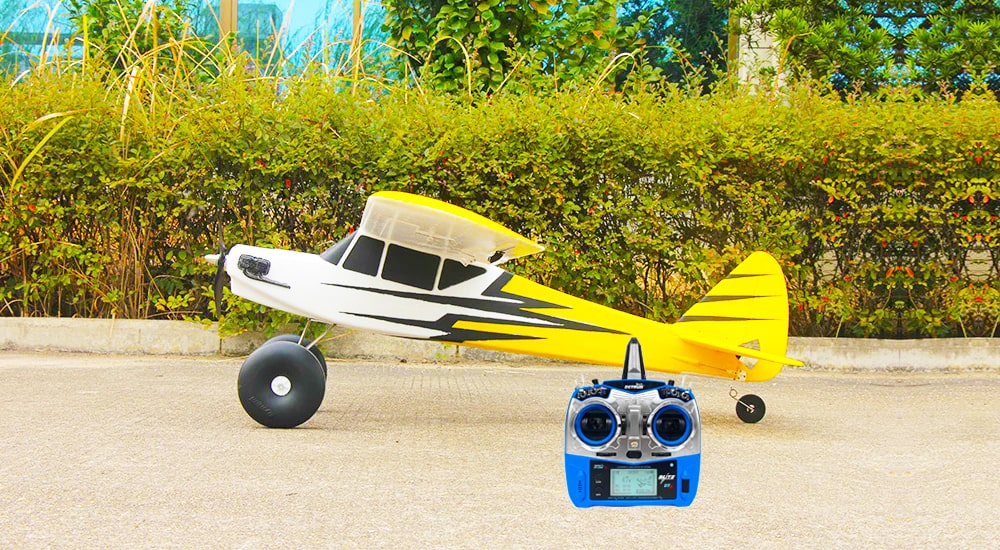
Remote control (RC) planes are a beloved hobby for many enthusiasts around the world. These miniature aircraft offer a fascinating blend of aviation technology, mechanical engineering, and piloting skills. One of the common questions among both novice and experienced hobbyists is: how long do RC planes last? The lifespan of an RC plane can vary widely based on several factors including the type of plane, frequency of use, maintenance practices, and the skill level of the pilot. This blog will explore these factors in detail to give you a comprehensive understanding of what affects the longevity of RC planes.
Types of RC Planes and Their Lifespan
- Foam Planes: Foam planes are often recommended for beginners due to their lightweight nature and relative ease of repair. They are usually made from materials such as Expanded Polypropylene (EPP), Expanded Polystyrene (EPS), or Depron. The lifespan of foam planes can range from a few months to several years. This wide range is largely due to the pilot’s experience level and the environment in which they are flown. Beginners might crash more frequently, leading to a shorter lifespan, whereas experienced pilots can keep their foam planes in good condition for years with proper care.
- Balsa Wood Planes: Balsa wood planes are popular among intermediate to advanced hobbyists. These planes are often more durable than foam planes and offer a better flight experience due to their rigidity and weight distribution. A well-maintained balsa wood plane can last several years, sometimes even a decade. However, they require more maintenance and careful handling, especially regarding humidity and physical damage.
- Composite Planes: Composite planes are typically made from materials like fiberglass or carbon fiber. These are often the most durable and high-performance RC planes available. They are less susceptible to minor crashes and environmental factors compared to foam or balsa wood planes. A composite RC plane can easily last for a decade or more with proper maintenance and care.
Factors Affecting the Longevity of RC Planes
- Pilot Skill Level: The skill level of the pilot is one of the most significant factors determining how long an RC plane will last. Beginners are more likely to crash and damage their planes, whereas experienced pilots can navigate and land their planes more safely, reducing wear and tear.
- Maintenance Practices: Regular maintenance is crucial for extending the lifespan of RC planes. This includes checking and replacing parts, ensuring batteries are properly cared for, and cleaning the plane after each flight. For instance, keeping the electronic components dry and free from debris can prevent short circuits and other electronic failures.
- Environmental Conditions: The conditions in which you fly your RC plane also play a significant role in its longevity. Flying in calm weather with minimal wind reduces the chances of crashes and damage. Conversely, flying in harsh conditions such as high winds, rain, or extreme temperatures can quickly wear down your plane.
- Frequency of Use: The more frequently you fly your RC plane, the quicker it will wear out. Components like the motor, servos, and batteries have a limited number of cycles before they need to be replaced. Moderate use with regular maintenance can help balance the enjoyment of flying with the longevity of the plane.
Maintenance Tips for Extending the Lifespan of RC Planes
- Regular Inspections: Before and after each flight, inspect your RC plane for any signs of damage or wear. Check the wings, fuselage, and control surfaces for cracks or loose parts. Ensuring everything is in good condition before flying can prevent small issues from becoming major problems.
- Battery Care: Proper battery maintenance is crucial for the longevity of your RC plane. Use a proper charging device, avoid overcharging, and store batteries at the recommended voltage level when not in use. Also, avoid running the batteries down completely, as this can shorten their lifespan.
- Proper Storage: Store your RC plane in a dry, cool place away from direct sunlight and extreme temperatures. Keeping the plane in a protective case or hangar can also prevent accidental damage when it’s not in use.
- Cleaning and Lubrication: After flying, clean your plane to remove any dirt, dust, or moisture that could cause corrosion or mechanical issues. Lubricate moving parts like servos and hinges to ensure smooth operation.
- Component Replacement: Regularly replace parts that show signs of wear and tear. This includes propellers, landing gear, and control linkages. Using high-quality replacement parts can also enhance the durability and performance of your plane.
Conclusion
The lifespan of an RC plane is influenced by a multitude of factors, including the type of plane, the skill of the pilot, maintenance practices, and environmental conditions. Foam planes, while affordable and great for beginners, may not last as long as balsa wood or composite planes.
However, with careful maintenance and mindful flying practices, even a foam plane can provide years of enjoyment. Regular inspections, proper battery care, and good storage practices are essential for extending the life of any RC plane. By understanding and addressing these factors, RC plane enthusiasts can maximize their investment and enjoy their flying experience for many years to come.





